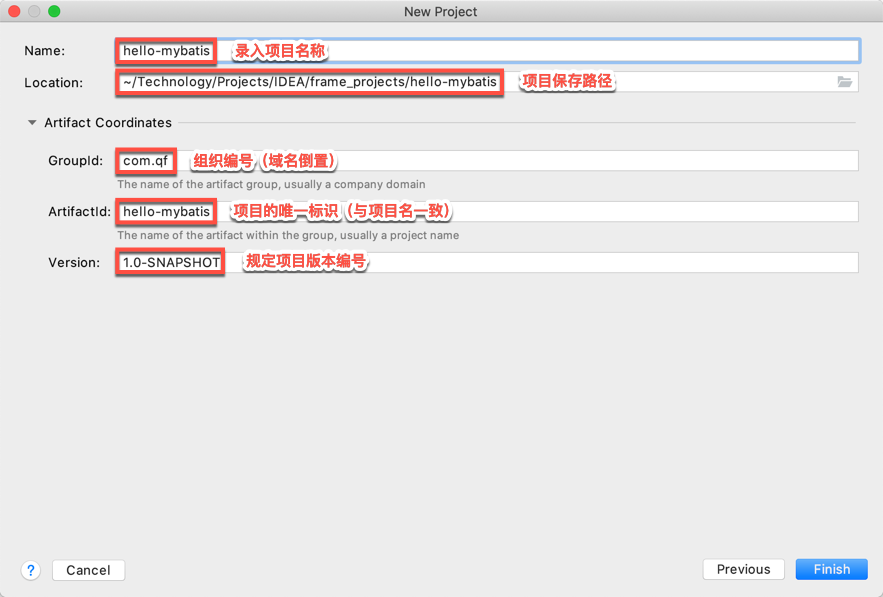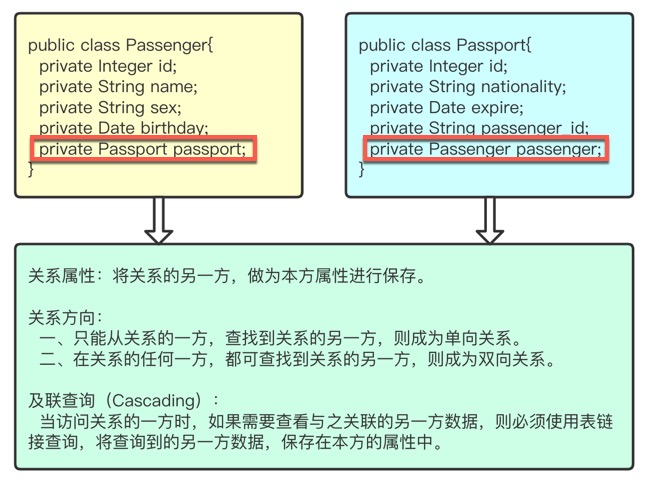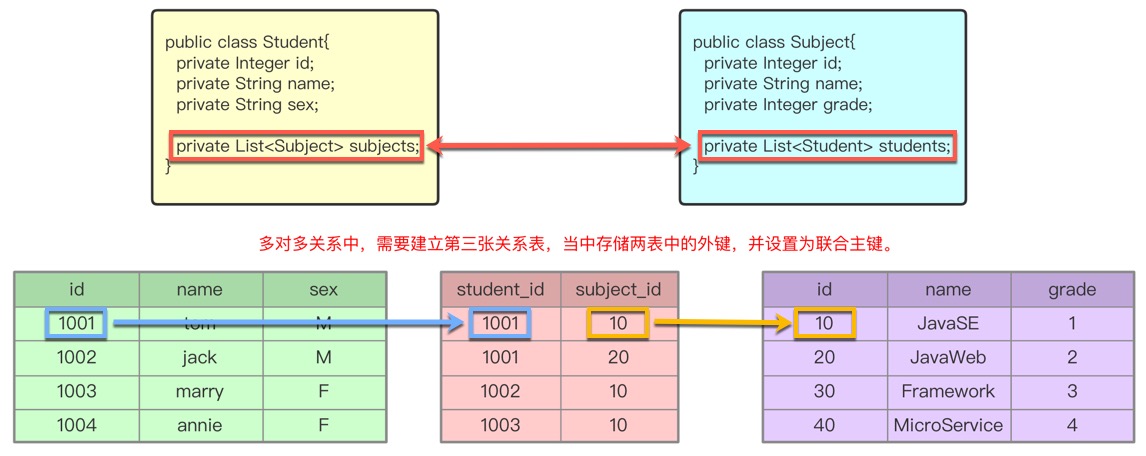1. ORM映射【★】 1.1 MyBatis自动ORM失效 MyBatis 只能自动维护库表列名与属性名相同时的一一对应关系,二者不同时,无法自动ORM。
自动ORM失效
1.2 一:列的别名 在SQL中使用 as 为查询字段添加列别名,以匹配属性名。
注意:列名与属性名相同时可不需要添加 列别名,直接使用 ResultMap 结果映射。
1 2 3 4 5 6 7 <mapper namespace ="com.mybatis.part2.orm.ManagerDao" > <select id ="selectManagerByIdAndPwd" resultType ="com.mybatis.part2.orm.Manager" > </select > </mapper >
1.3 二:结果映射 ResultMap - 查询结果的封装规则,通过<resultMap id="" type="">映射,匹配列名与属性名。
注意:
可通过 <settings> 标签将 ORM 映射结果的自动映射行为配置为 FULL ,此时只会映射 列名与属性名 相同的值,对象类型 和 集合类型 还需手动映射。
mybatis-config.xml
1 2 3 4 5 6 7 8 <properties ... /> <settings > <setting name ="autoMappingBehavior" value ="FULL" /> </settings > <typeAliases >
Mapper.xml
1 2 3 4 5 6 7 8 9 10 11 12 13 14 15 16 17 18 <mapper namespace ="com.mybatis.part2.orm.ManagerDao" > <resultMap id ="managerResultMap" type ="com.mybatis.part2.orm.Manager" > <id property ="id" column ="mgr_id" /> <result property ="username" column ="mgr_name" /> <result property ="password" column ="mgr_pwd" /> </resultMap > <select id ="selectAllManagers" resultMap ="managerResultMap" > </select > </mapper >
2. MyBatis处理关联关系-多表连接【★】 实体间的关系:关联关系(拥有 has、属于 belong)
OneToOne :一对一关系(Passenger旅客 — Passport护照)
OneToMany :一对多关系(Employee员工 — Department部门)
ManyToMany :多对多关系(Student学生 — Subject科目)
Table建立外键关系
Entity添加关系属性
Mapper中将属性与列名对应
2.1 OneToOne 1 2 3 4 5 6 7 8 9 10 11 12 13 14 15 16 17 18 19 20 21 22 23 24 25 26 27 <mapper namespace ="com.mybatis.part2.one2one.PassengerDao" > <resultMap id ="passengerResultMap" type ="com.mybatis.part2.one2one.Passenger" > <id property ="id" column ="id" /> <result property ="name" column ="name" /> <result property ="sex" column ="sex" /> <result property ="birthday" column ="birthday" /> <association property ="passport" javaType ="com.mybatis.part2.one2one.Passport" > <id property ="id" column ="passport_id" /> <result property ="nationality" column ="nationality" /> <result property ="expire" column ="expire" /> <result property ="passenger_id" column ="passenger_id" /> </association > </resultMap > <select id ="selectPassengerById" resultMap ="passengerResultMap" > </select > </mapper >
注意:指定“一方”关系时(对象),使用 <association javaType="">
2.2 OneToMany 1 2 3 4 5 6 7 8 9 10 11 12 13 14 15 16 17 18 19 20 21 22 23 24 25 26 27 <mapper namespace ="com.mybatis.part2.one2many.DepartmentDao" > <resultMap id ="departmentResultMap" type ="com.mybatis.part2.one2many.Department" > <id property ="id" column ="id" /> <result property ="name" column ="name" /> <result property ="location" column ="location" /> <collection property ="emps" ofType ="com.mybatis.part2.one2many.Employee" > <id property ="id" column ="emp_id" /> <result property ="name" column ="emp_name" /> <result property ="salary" column ="salary" /> <result property ="dept_id" column ="dept_id" /> </collection > </resultMap > <select id ="selectDepartmentById" resultMap ="departmentResultMap" > </select > </mapper >
注意:指定“多方”关系时(集合),使用 <collection ofType="">
2.3 ManyToMany
建立第三张关系表
1 2 3 4 5 6 7 8 9 10 11 12 13 14 15 16 17 18 19 20 21 22 23 <mapper namespace ="com.mybatis.part2.many2many.StudentDao" > <resultMap id ="allMap" type ="com.mybatis.part2.many2many.Student" > <id property ="id" column ="id" /> <result property ="name" column ="name" /> <result property ="sex" column ="sex" /> <collection property ="subjects" ofType ="com.mybatis.part2.many2many.Subject" > <id property ="id" column ="sid" /> <result property ="name" column ="sname" /> <result property ="grade" column ="grade" /> </collection > </resultMap > <select id ="selectAllStudents" resultMap ="allMap" > </select > </mapper >
注意:指定“多方”关系时(集合),使用 <collection ofType="">
2.4 关系总结 一方,属性字段中添加集合;多方,属性字段中添加对象。
双方均可建立关系属性,建立关系属性后,对应的 Mapper 文件中需使用 <ResultMap> 完成多表映射。





